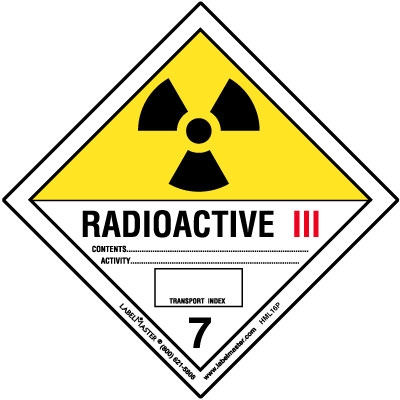 In the July 11th 2014 edition of the US Federal Register, the United States Department of Transportation’s (USDOT) Pipeline & Hazardous Materials Safety Administration (PHMSA) published a final rule conforming certain regulations within the US 49 CFR Hazardous Materials Regulations (HMR) to those of the International Atomic Energy Agency (IAEA). In docket PHMSA-2009-0063 (HM-250), PHMSA made the following summary of what they themselves describe as “notable amendments”:
In the July 11th 2014 edition of the US Federal Register, the United States Department of Transportation’s (USDOT) Pipeline & Hazardous Materials Safety Administration (PHMSA) published a final rule conforming certain regulations within the US 49 CFR Hazardous Materials Regulations (HMR) to those of the International Atomic Energy Agency (IAEA). In docket PHMSA-2009-0063 (HM-250), PHMSA made the following summary of what they themselves describe as “notable amendments”:
- Revise §§ 172.203(d)(3) and 172.403(g) to clarify that the total activity indicated on the shipping paper and label must be the maximum activity during transportation.
- 173.25(a)(4) to adopt the new TS–R–1 requirement for the marking of all overpacks of Class 7 (radioactive) packages with the word ‘‘OVERPACK.’’
- Revise Table 1 in § 172.504 to additionally require conveyances carrying unpackaged LSA–I material or SCO–I, all conveyances required by §§ 173.427, 173.441, and 173.457 to operate under exclusive use conditions, and all closed vehicles used in accordance with § 173.443(d) to be placarded. This change is a result of internal PHMSA review.
- Update definitions in § 173.403 for contamination, criticality safety index (CSI) for conveyances, fissile material, LSA, and radiation level. These changes are proposed primarily to align with definitions in the TS–R–1, and the change to the definition of ‘‘criticality safety index’’ is made to align with the NRC definition.
- Extend the retention period for Type A, Type IP–2, and Type IP–3 package documentation from one year to two years, to coincide with the minimum retention period currently required for shipping papers. PHMSA is also including more detailed language describing the kinds of information required to be included as part of the Type A package documentation. This change is being made based on internal PHMSA review of existing regulations, and is intended to ensure proper testing and preparation of these packages prior to being offered for transportation.
- Require that any conveyance, overpack, freight container, tank, or intermediate bulk container involved in an exclusive use shipment under § 173.427 or § 173.443(b) be surveyed with appropriate radiation detection instrumentation after each such shipment, and not be permitted to be used for another such exclusive use shipment until the removable surface contamination meets package
contamination limits and the radiation dose rate at each accessible surface is no greater than 0.005 mSv/h (0.5 mrem/h). These changes are a result of internal PHMSA review. - Update matter incorporated by reference to align with updated references in the TS–R–1 in § 171.7 and applicable sections.
- Clarify labeling requirements for radioactive shipments with subsidiary hazards in § 172.402. This change is a result of internal PHMSA review.
- Require that, when it is evident that a package of radioactive material or conveyance carrying unpackaged radioactive material is leaking or suspected to have leaked, access to the package or conveyance must be restricted and, as soon as possible, the extent of contamination and the resultant radiation level of the package or conveyance must be assessed in § 173.443. This will more closely align with the requirements in TS–R–1.
Note the several changes to marking, labeling, and placarding requirements. Such changes usually prompt renewed attention to enforcement of these areas, so shippers should take special note. Labelmaster has products which can assist shippers with all these needs. The rule becomes effective on October 1st, 2014, with voluntary compliance effective as of publication.
The full extent of the regulatory changes can be found in the text, which is linked to here: http://www.gpo.gov/fdsys/pkg/FR-2014-07-11/pdf/2014-15514.pdf
Labelmaster is a full-service supplier of hazardous materials transportation compliance products suitable for many applications. For more information, please visit our website at www.labelmaster.com



